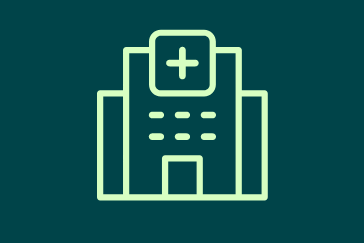
Arterial Ulcers – Prevention and Wound Care Techniques and Products
This activity will present evidence-based practices in the prevention and treatment of arterial ulcers. Arterial ulcers occur on the lower extremities. Without proper treatment, serious complications can develop that include infection, tissue necrosis, and amputation of the affected limb. Arterial ulcers are painful and debilitating and can have a serious impact on quality of life. Course expiration date: 5/30/2025
Arterial Ulcers – Prevention and Wound Care Techniques and Products
This activity will present evidence-based practices in the prevention and treatment of arterial ulcers. Arterial ulcers occur on the lower extremities. Without proper treatment, serious complications can develop that include infection, tissue necrosis, and amputation of the affected limb. Arterial ulcers are painful and debilitating and can have a serious impact on quality of life. Course expiration date: 5/30/2025

Providing Assessments to Individuals at Risk for Suicide
This course will provide information on treatment and services for persons at increased risk for suicide as well as those with active suicidal ideation. Course expiration date: 6/30/2025
Providing Assessments to Individuals at Risk for Suicide
This course will provide information on treatment and services for persons at increased risk for suicide as well as those with active suicidal ideation. Course expiration date: 6/30/2025

Opioid Death Epidemic Crisis: A Review of Pain Management Alternatives
Due to the ever-increasing reports of accidental deaths in the US associated with prescription pain relievers, the reduction of opioids has been elevated to a national healthcare priority. Ongoing, pain that is not relived can suppress the immune system. This may result in postsurgical infection and diminished wound healing.1 Ineffective management of acute pain can lead to uncontrolled acute pain and transition into chronic pain. Todays clinician requires an understanding of alternative non-opioid pain management practices that can be utilized to influence and reduce opioid prescribing in the practice setting.
Opioid Death Epidemic Crisis: A Review of Pain Management Alternatives
Due to the ever-increasing reports of accidental deaths in the US associated with prescription pain relievers, the reduction of opioids has been elevated to a national healthcare priority. Ongoing, pain that is not relived can suppress the immune system. This may result in postsurgical infection and diminished wound healing.1 Ineffective management of acute pain can lead to uncontrolled acute pain and transition into chronic pain. Todays clinician requires an understanding of alternative non-opioid pain management practices that can be utilized to influence and reduce opioid prescribing in the practice setting.

Biofilm, Enteral Nutrition, and Newborns
Biofilm is a complex community of microorganisms that can attach to a surface and lead to a variety of health issues. In newborns, biofilm formation in enteral feeding tubes is a significant concern for healthcare professionals as it can cause healthcare-associated infections (HAIs), increase patient morbidity, and prolong hospital stays. A 2020 report from the National Healthcare Safety Network (NHSN) found that healthcare-associated infections (HAIs) affect approximately 1 in 31 hospitalized patients in neonatal intensive care units (NICUs) in the United States resulting in thousands of deaths and increased healthcare costs each year. By taking this course, healthcare workers will gain the necessary knowledge and skills to provide safe and effective care to newborns requiring enteral nutrition.
Biofilm, Enteral Nutrition, and Newborns
Biofilm is a complex community of microorganisms that can attach to a surface and lead to a variety of health issues. In newborns, biofilm formation in enteral feeding tubes is a significant concern for healthcare professionals as it can cause healthcare-associated infections (HAIs), increase patient morbidity, and prolong hospital stays. A 2020 report from the National Healthcare Safety Network (NHSN) found that healthcare-associated infections (HAIs) affect approximately 1 in 31 hospitalized patients in neonatal intensive care units (NICUs) in the United States resulting in thousands of deaths and increased healthcare costs each year. By taking this course, healthcare workers will gain the necessary knowledge and skills to provide safe and effective care to newborns requiring enteral nutrition.

Biofilm in Endotracheal Tubes
Biofilm is a complex community of microorganisms that can attach to a surface and lead to a variety of health issues. Biofilm formation in endotracheal tubes is a significant concern for healthcare professionals as it can cause respiratory infections, increase patient morbidity, and prolong hospital stays, as well as a major contributor to antibiotic resistance, making treatment of these infections challenging. According to a report published in 2019 by the Centers for Disease Control and Prevention (CDC, ), hospital-acquired infections affect approximately 1 in 31 hospitalized patients, resulting in thousands of deaths and increased healthcare costs each year. Therefore, gaining the needed knowledge and skills to treat and minimize the development of biofilm in endotracheal tubes, reducing the risk of respiratory infections and improving patient treatment and outcomes.
Biofilm in Endotracheal Tubes
Biofilm is a complex community of microorganisms that can attach to a surface and lead to a variety of health issues. Biofilm formation in endotracheal tubes is a significant concern for healthcare professionals as it can cause respiratory infections, increase patient morbidity, and prolong hospital stays, as well as a major contributor to antibiotic resistance, making treatment of these infections challenging. According to a report published in 2019 by the Centers for Disease Control and Prevention (CDC, ), hospital-acquired infections affect approximately 1 in 31 hospitalized patients, resulting in thousands of deaths and increased healthcare costs each year. Therefore, gaining the needed knowledge and skills to treat and minimize the development of biofilm in endotracheal tubes, reducing the risk of respiratory infections and improving patient treatment and outcomes.

Long-Term Artificial Airways
Long-term artificial airways play a critical role in the care of patients who require long-term mechanical ventilation or airway management. Patients with tracheostomies or other long-term artificial airways require specialized care to prevent complications such as infection, airway obstruction, and difficulty breathing. Therefore, healthcare workers who are involved in the management of these patients must have a thorough understanding of the terminology, procedures, and potential complications associated with long-term artificial airways to ensure the best possible care, as well as outcomes for their patients.
Long-Term Artificial Airways
Long-term artificial airways play a critical role in the care of patients who require long-term mechanical ventilation or airway management. Patients with tracheostomies or other long-term artificial airways require specialized care to prevent complications such as infection, airway obstruction, and difficulty breathing. Therefore, healthcare workers who are involved in the management of these patients must have a thorough understanding of the terminology, procedures, and potential complications associated with long-term artificial airways to ensure the best possible care, as well as outcomes for their patients.

Acquisition of Organ and Tissue for Donation
Organ and tissue transplantation can be life-saving. Over 41,000 transplants took place in the United States in 2021. The process for acquiring organs and tissue for donation is complex and requires a team of dedicated professionals to ensure timely acquisition and transplantation. This activity discusses basic concepts and statistics of organ and tissue donation, supply and demand of organ and tissue donation, barriers to increasing the availability of donation, and nurses’ roles in the transplant process. Course expiration date: 4/5/2026
Acquisition of Organ and Tissue for Donation
Organ and tissue transplantation can be life-saving. Over 41,000 transplants took place in the United States in 2021. The process for acquiring organs and tissue for donation is complex and requires a team of dedicated professionals to ensure timely acquisition and transplantation. This activity discusses basic concepts and statistics of organ and tissue donation, supply and demand of organ and tissue donation, barriers to increasing the availability of donation, and nurses’ roles in the transplant process. Course expiration date: 4/5/2026

Medical Adhesive Related Skin Injuries (MARSI)
A prevalent but under-recognized complication in healthcare settings is skin injury related to medical adhesives. Officially termed medical adhesive-related skin injuries, or MARSI, this type of injury can occur across all care settings and age groups. MARSI occurs when the proper technique for application and/or removal of adhesive products is not used, resulting in tissue trauma. These injuries impact not only patient safety and quality of life but the cost of healthcare, as well. Course expiration date: 10/6/2025
Medical Adhesive Related Skin Injuries (MARSI)
A prevalent but under-recognized complication in healthcare settings is skin injury related to medical adhesives. Officially termed medical adhesive-related skin injuries, or MARSI, this type of injury can occur across all care settings and age groups. MARSI occurs when the proper technique for application and/or removal of adhesive products is not used, resulting in tissue trauma. These injuries impact not only patient safety and quality of life but the cost of healthcare, as well. Course expiration date: 10/6/2025

Chemotherapy Induced Nausea and Vomiting
Nausea and vomiting are troubling side effects of chemotherapy. Controlling and preventing nausea and vomiting in patients with cancer is key to the patient’s quality of life. Nausea and vomiting can also cause a multitude of additional problems, such as anorexia and metabolic disturbances, and lead to mental and physical deterioration.
This activity defines the different types of chemotherapy-induced nausea and vomiting (CINV) and discusses the risk factors, the prevalence of CINV, and the evidence-based guidelines for controlling and preventing CINV. Course expiration date: 4/3/2026
Chemotherapy Induced Nausea and Vomiting
Nausea and vomiting are troubling side effects of chemotherapy. Controlling and preventing nausea and vomiting in patients with cancer is key to the patient’s quality of life. Nausea and vomiting can also cause a multitude of additional problems, such as anorexia and metabolic disturbances, and lead to mental and physical deterioration.
This activity defines the different types of chemotherapy-induced nausea and vomiting (CINV) and discusses the risk factors, the prevalence of CINV, and the evidence-based guidelines for controlling and preventing CINV. Course expiration date: 4/3/2026